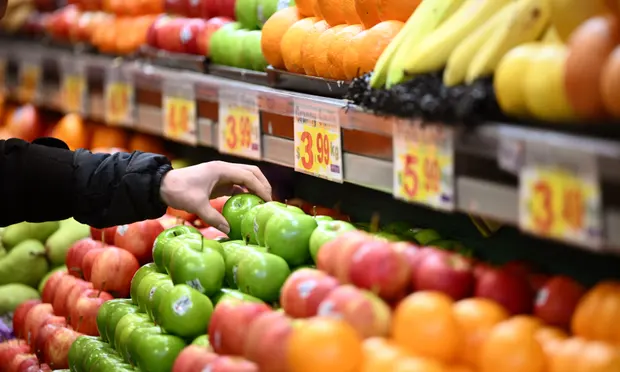It is a good time to be a big grocery company, or a mining company, or a travel company, or a bank or … well, let’s be honest: as the Bureau of Statistics reported when inflation took off at the start of last year, “Australian businesses benefited from rising prices.”
And they have continued to benefit in the year that has followed.
Whether it is Jonathan Barrett’s report showing increased profit margins for Coles and Woolworths or the UBS research showing those two companies’ prices have risen faster than inflation, or Qantas being on track to deliver a record profit, or banks recording stonking profits as interest rates have risen – those wanting to argue Australian companies have not used the inflationary environment to increase prices are starting to look a bit naive.
One of the worst things about economic debate in this country – and, to be honest, most others as well – is the view that company profits are a pure gain for the economy. More profits are always better.
But when it comes to retail, banks, travel, or even eventually mining companies through the goods and energy that are produced with their minerals, those profits come from somewhere.
And they come from consumers.
Households spend, businesses record profits and employ workers, paying them more wages. At least that is how it is supposed to go.
And so when companies make record profits, we are reassured by politicians and business groups that all is well.
But that neat function is not sustainable if wages and household incomes are failing to keep up with prices.
Because people are the economy, not companies. And at a certain point the people cry uncle and stop spending.
This is where it starts to get worrying. Amid all the numbers in the federal budget, this month was a rather scary figure regarding household spending.
Australian household spending is about half of the entire country’s economy. If households are not increasing their consumption, the economy is in trouble. And the budget expects that very thing to start happening.
Since the early 1980s there have been just four years where household consumption growth was below the 1.5% estimated for 2023-24: the 1990s recession, the global financial crisis, and twice during the pandemic.
Worse still is that this predicted increase is due to population growth. Take away the expected 1.7% increase in population and per capita household consumption is set to fall for just the fourth time since 1985-86.
So, not good.
You might think it’s just because we spent so much coming out of the pandemic, and that this is just a natural drop-off.
Well, not really.
During the pandemic, total household consumption fell, mostly due to a fall in spending on services. Now it is essentially only back to where we would have expected it to be before the pandemic. So, it is not like we are at a point where you would expect it to slow; rather, you would expect it to carry on like before the pandemic.
And yet the latest retail figures give us a sign of what is to come.
Take spending on food. There certainly has been a huge increase in how many dollars we spend on food – well above what you would have expected.


